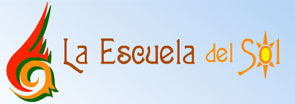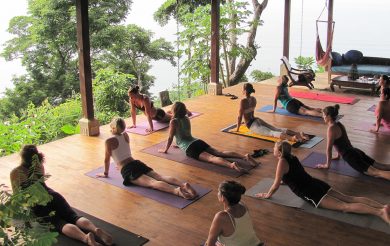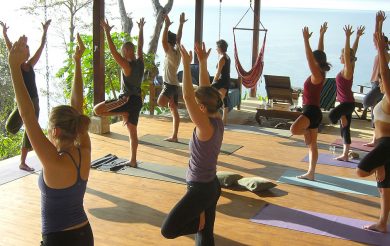- Home
- Accommodation
- Activities
- Area Info
- Maps
- Photo Galleries
- Real Estate
- Travel
Spider Monkeys
Spanish Name: Mona Araña
Height/Weight: Adults of both the sexes can be more than 8 kg and 1.28 m long from head to tail but their prehensile tail is longer than the body and head. Males can be slightly heavier and have a longer head and body length, but female tail length can surpass that of the male. Infants are 500 g at birth.
Found In: They are found manly off the guard on the elevated canopies of tropical forests
Life Span: 22 years
Spider Monkeys are one of the most intelligent and perceptive species of primates in Costa Rica. With their long, slender arms and long prehensile tails the animals can move flexibly and elegantly through the forest canopies in search for fruits, seeds and leaves. Spider monkeys prefer living in rainforests and mangroves and avoid coming on the ground. They are happy in the upper forest canopies, choosing an undisturbed life on elevated trees.
Of late, spider monkeys are severely endangered in Costa Rica owing to encroachment, deforestation, loss of their habitat and poaching. On the Nicoya Peninsula, spider monkeys are all but extinct but in the Curu Wildlife Reserve a successfully running re-introduction program has led to an increase in their numbers.
Adults of both sexes can be weight more than 8 kg and are 1.28 m long from head to tail with their prehensile tail being longer than the body and head. The males can be slightly heavier and have a lengthier head and body, but the females sport a longer tail than their male counterparts. Infants are generally 500 g at birth.
They could be spotted in abundance throughout Costa Rica. However due to poaching and hunting, their numbers are now limited to a few regions of the country. Several national parks of Costa Rica such Santa Rosa National Park, Corcovado National Park, La Selva, Monteverde Cloud Forest Reserve and San Vito house these species. There are four spices of spider monkeys identified in Costa Rica. They are generally spotted along the waterways between Tortuguero and on the mainland of Costa Rica.
The spider monkey requires greater movement space than the other smaller primates in Costa Rica. Surviving mostly on leaves, spider monkeys travel great distances for the purpose of foraging, sometimes occupying a territory of more than 2,000 acres. Visitors to Costa Rica will most likely spot them perched on elevated canopies. Spider monkeys move in groups of 20 to 30, but are known to be solitary foragers. Females give birth every two to every 2-4 years.
Spider monkeys are also found on Costa Rica’s central and southern Pacific coast mainly the Manuel Antonio National Park and the Corcovado National Park. On the Caribbean coast, the species can be spotted in some regions of Tortuguero National Park and then to the north in the Barra del Colorado National Wildlife Reserve which can be reached only via a boat.
Group dynamics are rather complicated and can vary throughout the day. They tend to have sub divisions of small groups, mostly comprising 2 to 3 monkeys, but there are also mini troop groups headed by an adult alpha male and consist of some females and their infants. All the spider monkey subdivisions converge into a single unit at night. Their group strength is generally about 20 individuals. Apart from collecting into this large group at some sleeping trees, spider monkeys look for forage solitarily or in their sub divided small groups.
Protecting their territories is another complex function phenomenon of their group dynamics. Spider monkeys communicate primarily via vocalizations, expressions, and body language. Moreover, adult males release chemicals from glands located in their chest which are used to demarcate their territory. Spiders have specific calls associated with each emotion. For instance, a barking sound is a signal against territory predators or invaders, and there are at least a couple of call types used to direct group movements.
The female spider monkey picks a male from her whom she wishes to mate with. They cleverly sniff their mates to examine the males to ensure they are ready for mating. An Infant spider monkey stays in close proximity to its mother for the first 3 months. Later it is carried on the stomach and subsequent rides on her side. Infants remain dependent on their mother’s milk for the first few years of life. The spider monkey’s gestation period spans 225 days every couple of years. It is owing to their lengthy reproductive duration that spider monkeys are extremely sensitive to human disturbance, and their population is not able to sustain hunting or deforestation activities.
The average life span of a Spider Monkey is around a couple of decades. They can live from 15-27 years.
Further Reading
Spider Monkeys – Costa Rica Journeys Article on Spider Monkeys
http://www.southernexplorations.com/adventure-travel-information/travel-articles/monkeys/costa-rica/spider-monkeys-costa-rica.htm
News.co.cr – Sharp Decline in Costa Rica Spider Monkey populations
Great Stuff

Clandestina Restaurant
My new favorite restaurant, Clandestina is not to be missed by food lovers staying anywhere near to Montezuma. Established in March 2015, Clandestina is the new kid on the block. The Oregon/Tico collaboration is a winner among locals and travelers alike, with artisan craft beers, made onsite by Butterfly Brewing Co. and delicious, exciting […]











